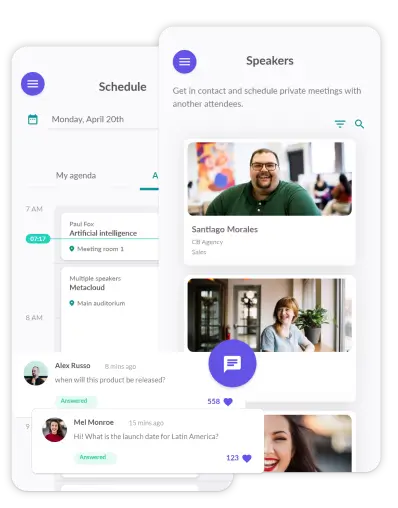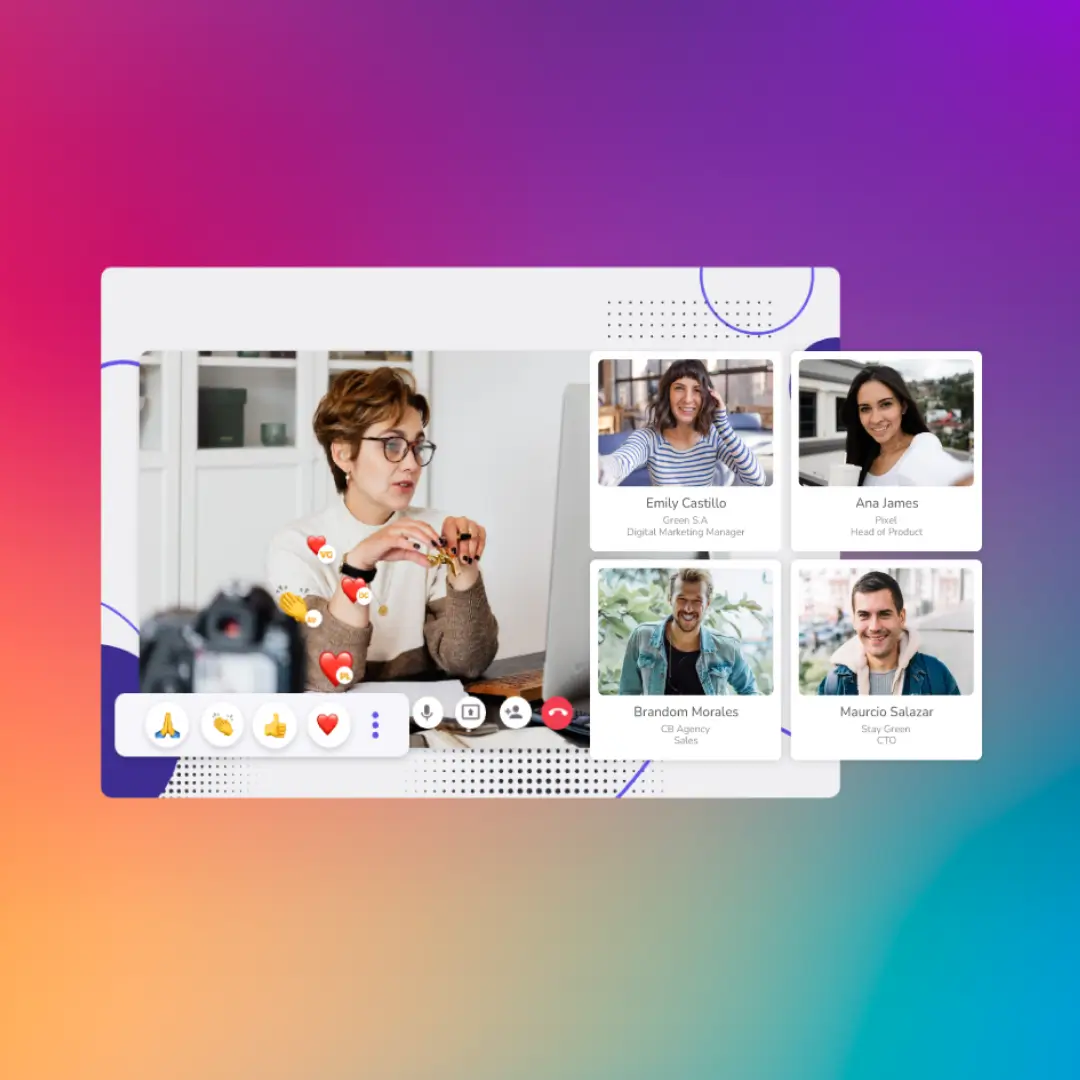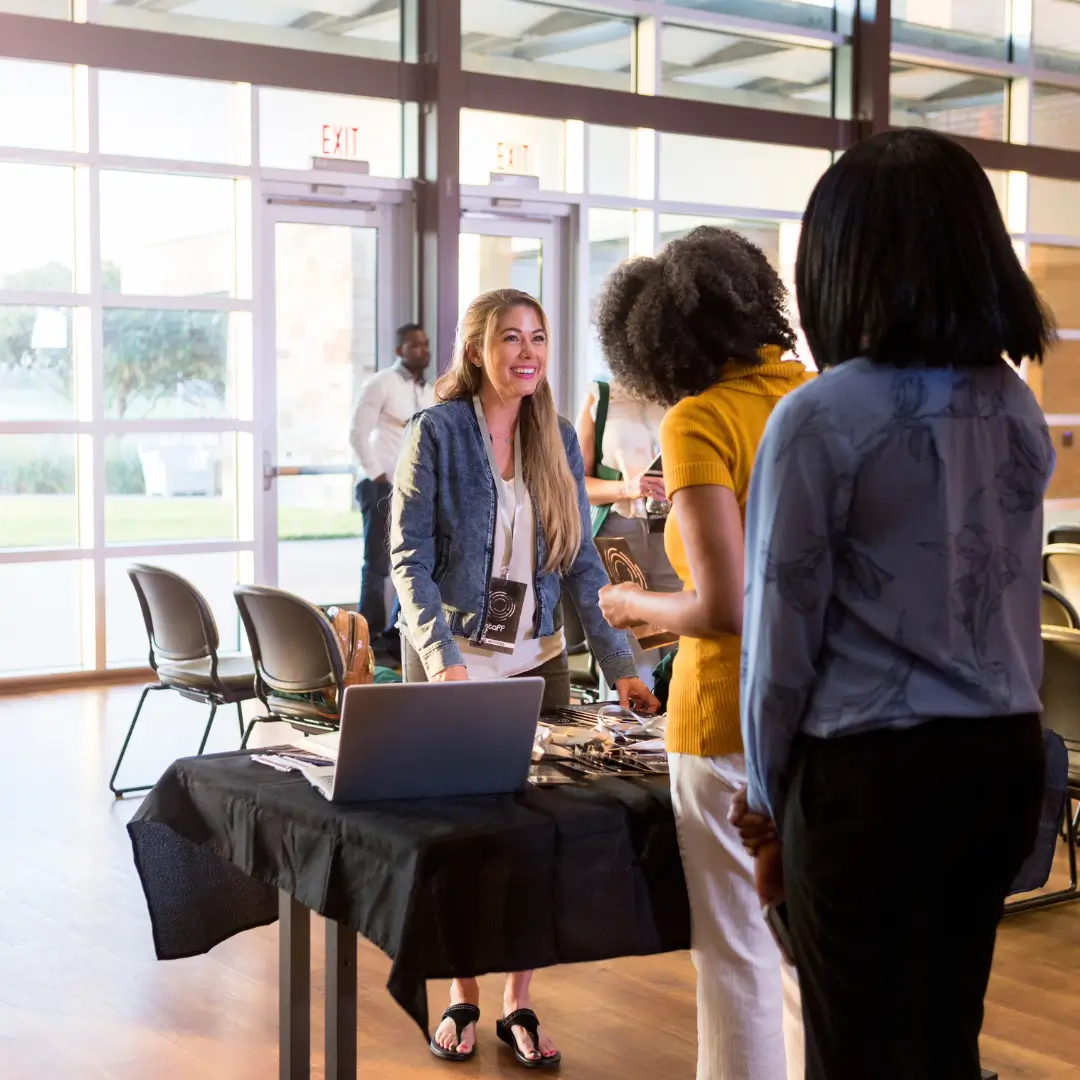From influencers and invitations to teasers and tutorials, a well-defined and effective communication strategy is vital to the success of any virtual event. Why?
Well, let me summarise this in three points…
- It sparks engagement, attracts the right attendees, and gets registrations
- It connects the dots and aligns your event, content, marketing, and sales strategies
- It provides you with a roadmap to achieve your virtual event objective(s)
So now we’ve got that out of the way, let’s take a look at how you can keep your attendees engaged and informed with this step-by-step guide on how to build an effective communication strategy for your virtual events.
The three characteristics of a successful communication strategy
Before we move on to the more specific steps of designing a successful communication strategy, here are three overarching traits that are key to any comms strategy.
Understand your attendees: Effective communication depends on knowing who you’re speaking to. Every event comes with its own demographic so whether that’s executives, students or marketing professionals, how you communicate will depend entirely on this.
To understand your attendees, spend some time looking at past attendees, or if you’ve never run an event before, take a look at your customers, leads, and even your social media followers. Look at their age, their hobbies, where they’re from, and any other criteria that will help you get inside the mind of your attendees.
Think outside the box: The online world is a crowded place and with there being so many virtual events, standing out from the crowd can be tough. That’s why it’s important to find your niche and then build a narrative based on this.
Find ways to get creative with your communications, whether that’s creating a powerful teaser or sending a goody bag to invitees, there are plenty of options out there. The point is that when you’re creative with your communications, you’re going to spark interest and leave a long-lasting impression on your audience.
Map out the journey: Another important consideration to make is that an event effective communication strategy should always fit in with your wider content plan. That’s why it’s worth spending some time mapping out the journey from your first point of contact right through to how you want to engage with your attendees at the end of the event.
How will you be announcing the event? What channels will you be using to communicate? Will you be adding attendees to an email sequence after the event has finished? These are all questions that need to be answered, and the more time you spend thinking about it, the clearer your strategy will be.
Designing an Efficient Communication Strategy
So now we’ve got the basics out of the way, let’s dive deeper into what will make a winning
Create a buzz
The first thing to consider is the announcement, and more specifically, how you’re going to create some serious excitement around this. Just think about how marketing masterminds like Apple and Tesla announce a new product. They instill FOMO and spark curiosity inside their followings (which is exactly what you should be doing for your online events).
So before making the announcement (usually 12 weeks before) offer your followers a few clues and teasers that will be bound to rouse their interests. Think about some social media posts or even a save the date email to get the word out. So long as it’s exciting, you’ll have people talking about the event well before it’s announced.
Send the invitations
Now it’s time to make the big announcement. Send out invitations to show off to your potential attendees how great your event is going to be and the value that it will bring. This is your first opportunity to communicate directly to your potential attendees, so use this opportunity to go the extra mile and leave a long lasting impression on them.
Think outside the box and above all make the invitations personal and creative. This could be in the form of a handwritten letter, a goody bag, or even an email with an origami design. The idea being that your invitation won’t be thrown in the bin straight away, whether that’s physically or virtually.
Looking for more invitation inspiration? Check out this article.
Share promotions and discount coupons
So up until now you’ve created interest in your online event, people should have a clear understanding of what the event’s about, so now it’s time to convert that interest into registrations. The best way of doing this is by offering promotions and discount coupons.
So whether that’s early bird rates, discount codes, or referral codes all of these options can help to promote the event and encourage people to take action by buying their tickets. As a part of your ticket pricing strategy this can be integrated with email or peer-to-peer campaigns to give potential attendees a real incentive to register for the event.
Looking for more insight on how to use discount coupons? Check out this article.

Send out reminders, teasers, and tutorials
No surprise here, but emails play an integral part of every communication strategy. That’s why it’s always worth spending a lot of time preparing different sequences and thinking about the different groups of people you’ll be communicating with aka contact lists, registered attendees, and any speakers, sponsors and partners.
From this, you’ll want to create different emails and sequences, covering two areas, one, promoting the event, and two, providing the relevant information. Consider what content needs to go inside these emails, such as a promotional blog with a speaker or tutorial videos showing attendees the virtual stage and networking.
Send out a welcome email with resources for the event
As the day of your event approaches, dedicate some time to creating a welcome email with relevant resources for your event. This should cover a couple of different areas. First, you’ll want to explain the virtual stage, networking (if you’re offering it), and any other technical details that need to be mentioned. This is important because it will eliminate any confusion and will allow attendees to go straight into the event and everything you’re offering.
Second, you’ll want to include assets that can be used to enhance the attendee experience. These can include FAQs, guides and any additional content such as ebooks and articles to guide the attendee through the online event and provide them with a reference point for any information they might be looking for.
Share takeaways and recaps from each session
Throughout the event it’s vital that you keep your attendees informed and updated on all the content that’s going on. Granted, there’s going to be a lot going on and with so many distractions that come with a virtual event, it’s important that you share regular takeaways and recaps from each session.
The best way of doing this is by creating a social media hashtag and creating regular posts either on Twitter or LinkedIn that can be shared with not just your attendees, but also the outside world. This can come in extremely handy because you’re opening up your content to the masses by providing them with short, digestible snippets.
Thank you email and survey
Now it’s time to talk about what needs to be done after the event, and more specifically, the very first form of communication, the thank you email. Here, you want to use highlights from the event and also any content that can help continue the conversation with your attendees (see the next point).
On top of this, you’ll also want to think about gathering feedback to see how you can improve for future events. That’s why it’s worthwhile including a survey inside your thank you email (much higher opening rate) asking participants for feedback on the date, location, speakers, session topics, vendors, and the overall ambiance of the event. Finally, don’t forget to use this moment to your advantage by asking your attendees if there’s anything they need.

Continue the communication with updates and content
The conversation doesn’t have to stop once the event is over. Combine all of the repurposed content that you have email sequences so that you can continue to engage with your attendees. Segment these sequences into the different attendee personas that you’ve created. Not only will this help you to continue building a stronger relationship with your attendees, but it also means that they’ll be ready to go for your next event.
To ensure that attendees are still engaged with your brand long after the event, make sure to repurpose all of the content that you’ve collected. There should be a lot of it to maintain the conversation long after the event has finished. Spend some time after the event to identify the most popular content along with how it can be leveraged. This could be in the form of a new podcast series or a series of video snippets from your keynotes.
Final Thoughts
So as you can see, there’s a lot to take in here, and that’s because an effective strategy should cover every angle and aspect of your communications. By following the three principles of understanding your attendees, thinking outside the box, and mapping out the journey you can be sure that your communications will be thorough and engaging.
Finally, if you’ve made it this far, then check out this article virtual event logistics which covers the more technical aspects of planning an online event.
Discover how Eventtia helps world-leading brands digitize and scale their events
Learn more
Share








